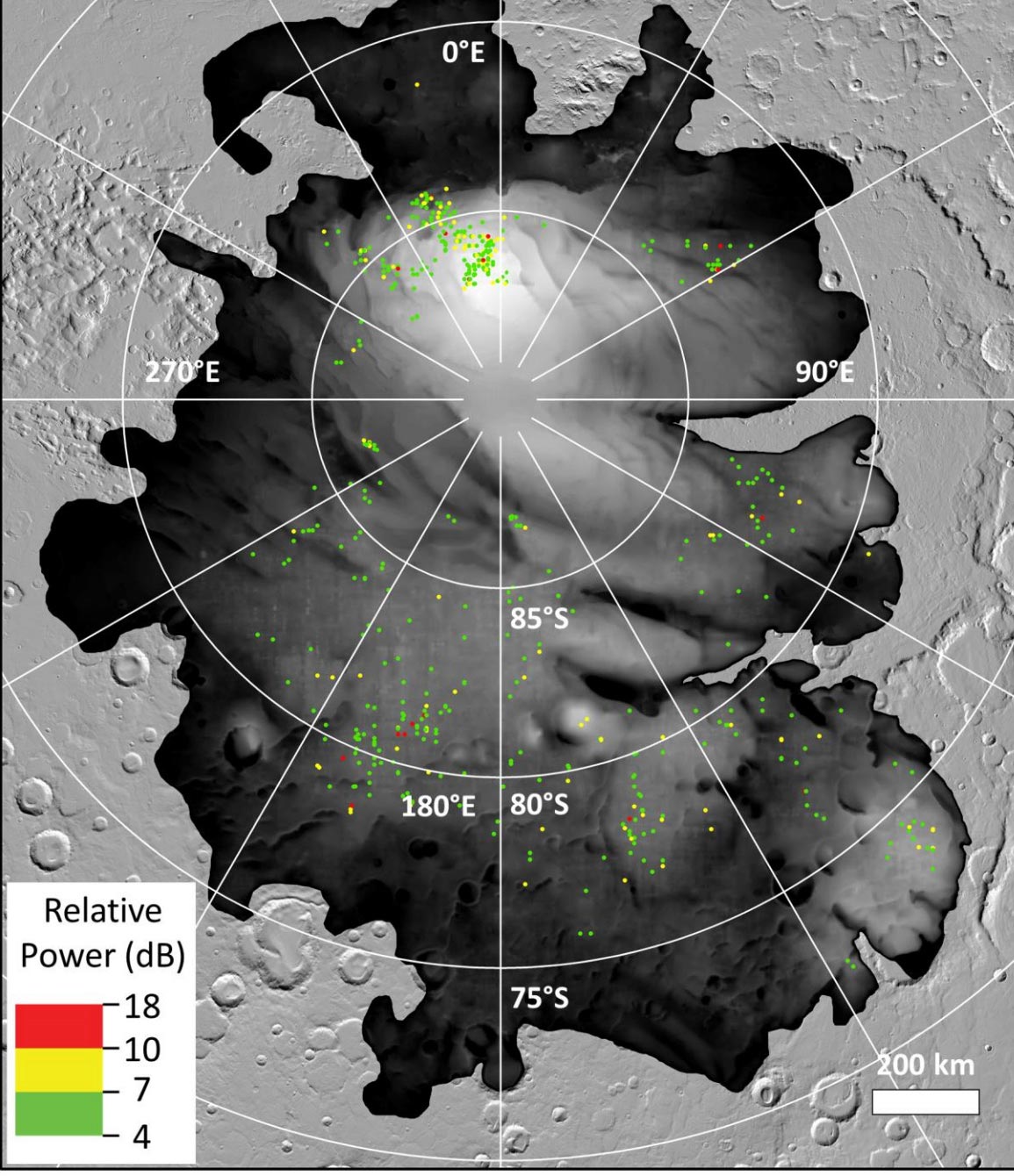
The spacecraft detected clays nearby this ice; scientists have proposed such clays are the source of radar reflections that have been previously interpreted as liquid water.
Three studies published in the past month have cast doubt on the premise of subsurface lakes below the Martian south pole.That’s the case on Earth, at least, and also why scientists remain tantalized by any evidence suggesting there’s liquid water on cold, dry Mars.
The Red Planet is a difficult place to look for liquid water: While water ice is plentiful, any water warm enough to be liquid on the surface would last for only a few moments before turning into vapor in Mars’ wispy air.
Hence the interest generated in 2018, when a team led by Roberto Orosei of Italy’s Istituto Nazionale di Astrofisica announced they had found evidence of subsurface lakes deep below the ice cap at Mars’ south pole.The colored dots represent sites where bright radar reflections have been spotted by ESA’s Mars Express orbiter at Mars’ south polar cap.Such reflections were previously interpreted as subsurface liquid water, but their prevalence and proximity to the frigid surface suggest they may be something else.
In this case, they produced especially bright signals beneath the polar cap that could be interpreted as liquid water.
But after taking a closer look at the data, along with experiments in a cold laboratory here on Earth, some scientists now think clays, not water, might be creating the signals.Not long after the lakes paper was published, about 80 of those scientists met for the International Conference on Mars Polar Science and Exploration in Ushuaia, a seaside village at the southern tip of Argentina.
He’s also the co-principal investigator, along with Orosei, of the instrument behind the intriguing radar signals, called MARSIS, or the Mars Advanced Radar for Subsurface and Ionospheric Sounding.
Lots of talk centered on the subsurface lakes.Isaac Smith of Toronto’s York University bundled up while working in a lab, freezing smectite clays with liquid nitrogen to test how they respond to radar signals.The results have challenged the hypothesis that subsurface lakes can be found at Mars’ south pole.
But in their recent paper published in Geophysical Research Letters, they found many of these signals in areas close to the surface, where it should be too cold for water to remain liquid, even when mixed with perchlorates, a kind of salt commonly found on Mars that can lower the freezing temperature of water.
But York University’s Isaac Smith, knowing that a group of clays called smectites were present all over Mars, went further in a separate, third paper: He measured smectite properties in a lab.
He also doused them with liquid nitrogen, freezing them to minus 58 degrees Fahrenheit (minus 50 degrees Celsius) – close to what they would be at the Martian south pole.
Then, he and his team checked for clays present on Mars near those radar observations.
There’s no way to confirm what the bright radar signals are without landing at Mars’ south pole and digging through miles of ice.